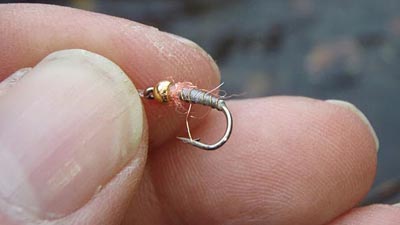


|

|
September 2011 |
|
News & EventsGeneral Meeting - Tuesday, September 13, 2011Tom Gilmore
|
||
Musconetcong Dam Removal UpdateBrian Cowden – TU’s Musconetcong Home Rivers Initiative Coordinator
The dams, one dating to 1790 which was made entirely of stone and the others being wooden coffer dams dating to 1850 and 1890 respectively, once fueled grist, saw and paper mills close to the confluence with the Delaware River. All three dams were considered “low flow impediments to anadromous fish passage” and that is why they were targeted for removal. By doing so, we have improved the score for future dam removal funding from the federal agencies and helped restore species that haven’t been above these structures like American shad, striped bass and river herring in well over 100 years. Permits are expected to arrive for the removal of the Finesville dam which may take place this year if water levels cooperate. That is the first major dam upstream of the Delaware. TU has also hired Princeton Hydro to begin feasibility studies to remove the Hughesville paper mill dam, which is dam # 2 upstream of the Delaware. Our Musconetcong River Restoration Partnership will be meeting this fall to engage the owners of the Warren Glen and Hughesville dams to consider allowing us to fully remove those dams beyond the feasibility study at Hughesville. A recent engineering report required by DEP Dam Safety & Flood Control regarding the condition of the Warren Glen dam, the 3rd dam upstream of the Delaware and the state’s largest, has proven that this structure is in need of significant rehabilitation or removal. This dam backs up about half of the famed Musky Gorge and is half owned by the NJ Division of Fish & Wildlife. |
||
President’s LetterSeptember 2011I hope everyone withstood the ravages of Hurricane Irene with out too much difficulty. New Jersey and other parts of the north east were hit pretty hard by the storm. Two weeks after the storm and there are still areas flooded and without power. Many areas were affected twice, when the remnants of Tropical Storm Lee passed through the area earlier in the week. Many of us were affected by the storm but we were not the storm's only victims. Many of our local waterways were impacted as well. Now many, myself included, would argue that this is the natural way of things. Floods flush our rivers of sediment, change existing pools and runs and generally rearrange things to mother nature's fancy. This would be fine in the natural world, but we no longer live in a natural world. Our rivers have been channelized "to prevent flooding" and our development of the land cause huge amounts of sediment to find it's way into our rivers during heavy rains. In some cases mother nature needs a little help keeping our cold water ecosystems healthy after a weather event like Hurricane Irene. Trout Unlimited National has offered to help out local chapters who are trying to repair some of the damage caused by the storm. We are currently looking over our river systems looking for potential problems caused by the flooding of Hurricane Irene. In some cases the damage was caused by the storm and in other cases the damage has the marks of man. For example, I recently observed backhoes in a stream trying to clear it of silt deposited by the storm. The work is being done to prevent flooding of developed areas but it no doubt caused extensive damage to the stream bed ecosystem. In the weeks to come, we will be identifying projects that will need our help. In some cases, it could be restoring stream side plantings to prevent erosion or it may be more demanding work, rolling rocks and rebuilding bank stabilization structures. Please keep an eye on your inbox, as we will be announcing these work projects as action alerts. While your at it, look around on some of your local waters and if you see a potential problem, bring it to our attention. The easiest way to do this is to drop us an e-mail. You can find e-mail addresses on our web page at www.cjtu.org. Fall is right around the corner and with it brings the return of trout fishing. As the water cools you no longer have to worry about fatally stressing a fish. In addition to the return of quality fishing, fall brings the return of our general meetings. As always we will meet on the second Tuesday of every month at the American Legion Hall in Dunellen, NJ. If you need directions you can find them on our website. I hope to see you at a meeting this fall! This is the time of year when we begin work on our trout in the classroom project. This is a very worthwhile endeavor that introduces children to the cold water ecosystem. We are always looking for volunteers to lend a hand, so I'm giving you a month to mull it over. I 'll have more information on the project and who to contact in our next newsletter. If you attend our monthly meetings you can get ahold of me and i'll explain all the details. If you reside in central New Jersey you may be interested in dropping by the NJ Wild Outdoor Expo being held in Jackson, NJ on September 17 & 18. While it looks like we will not be able to get the volunteers to man a table at the event it is worthwhile to attend anyway! It is also a great place to bring the entire family as there will be many activities for the children. For additional information visit NJ Fish and Wildlife's website at http://www.nj.gov/dep/fgw/expo.htm Thats it for now. I'll see you on the water once the floods recede!
Tight Lines, |
||
Fly of the Month“The End Of the Rainbow”
|

|
Click here for the recipe ! |